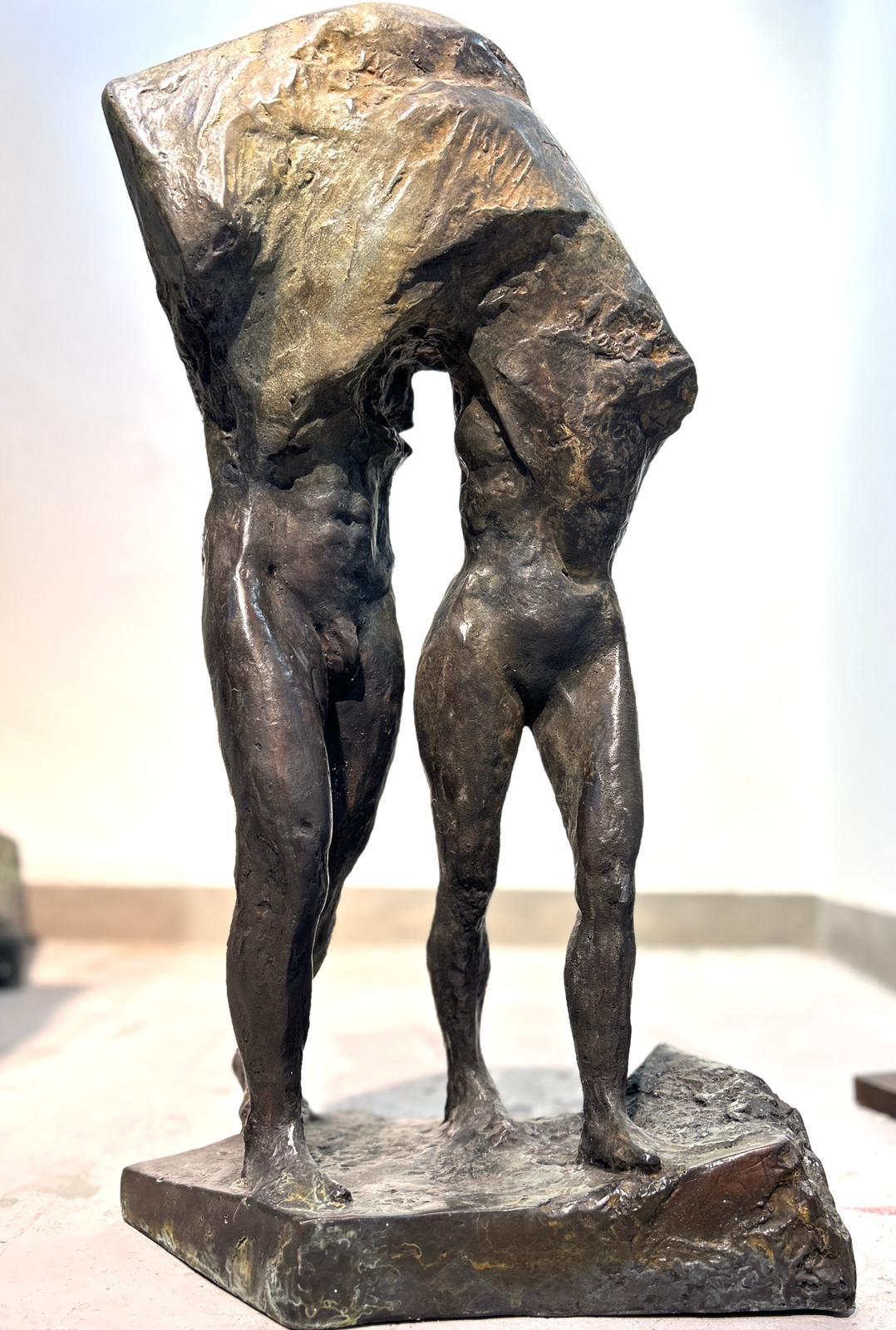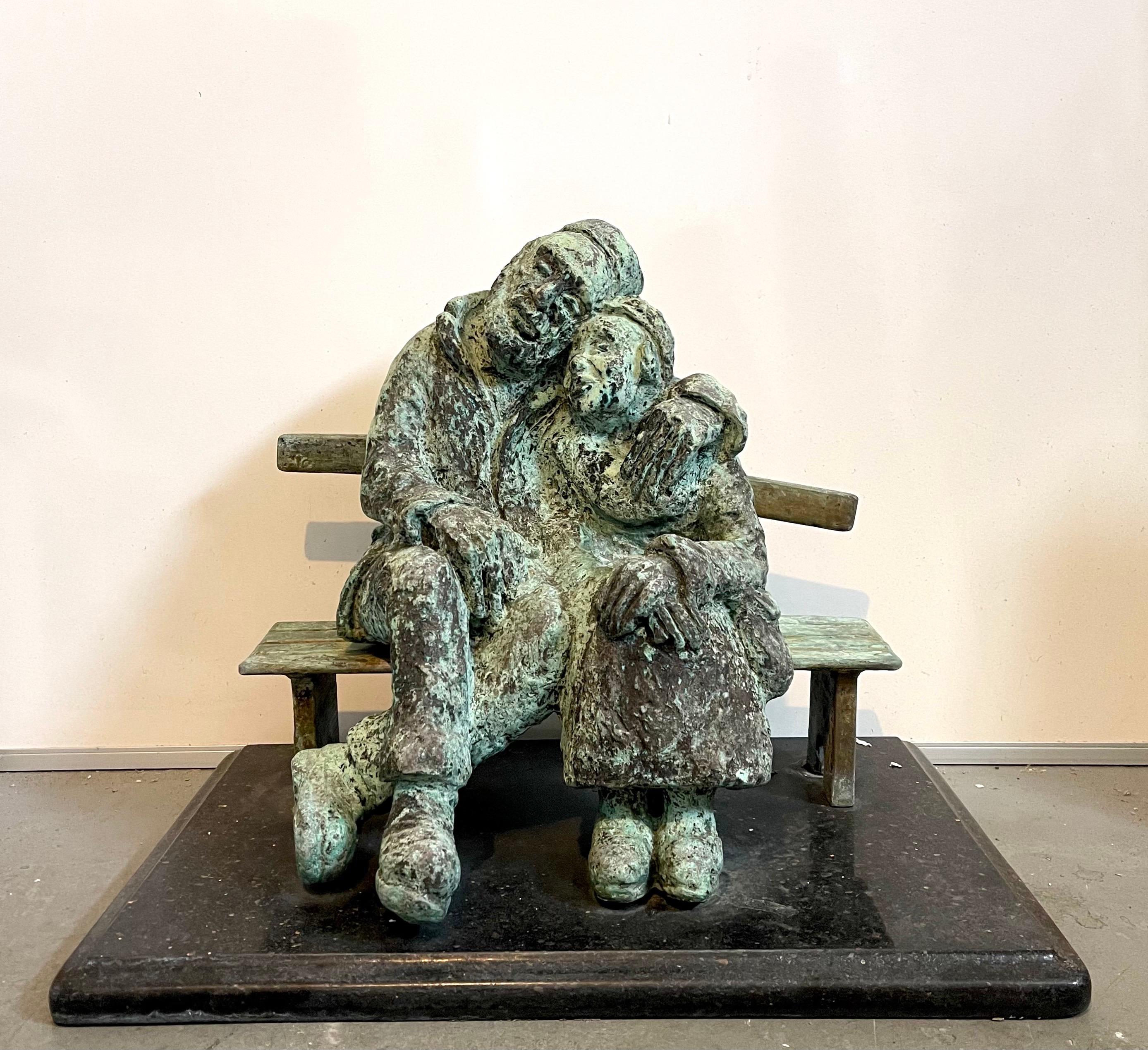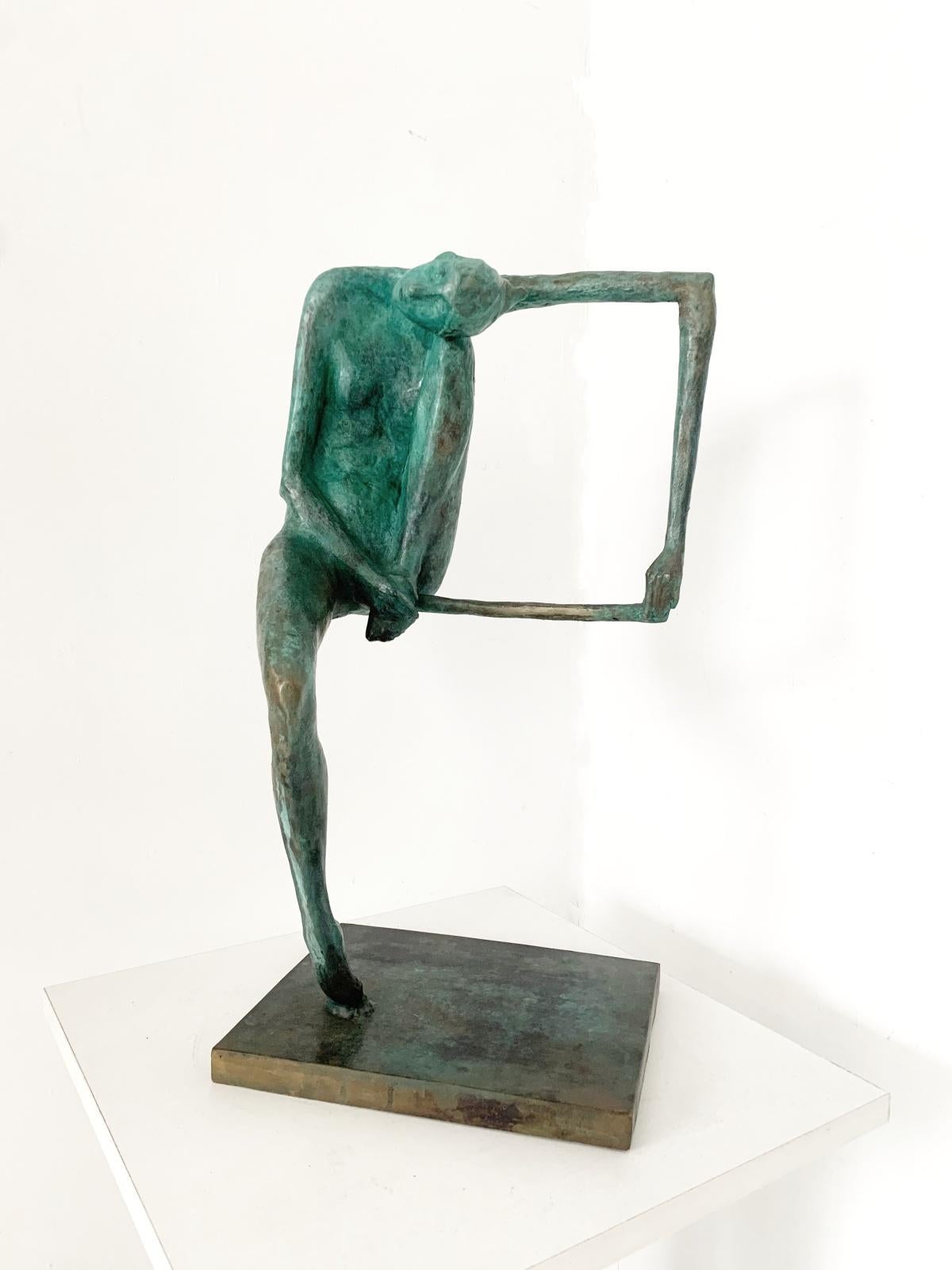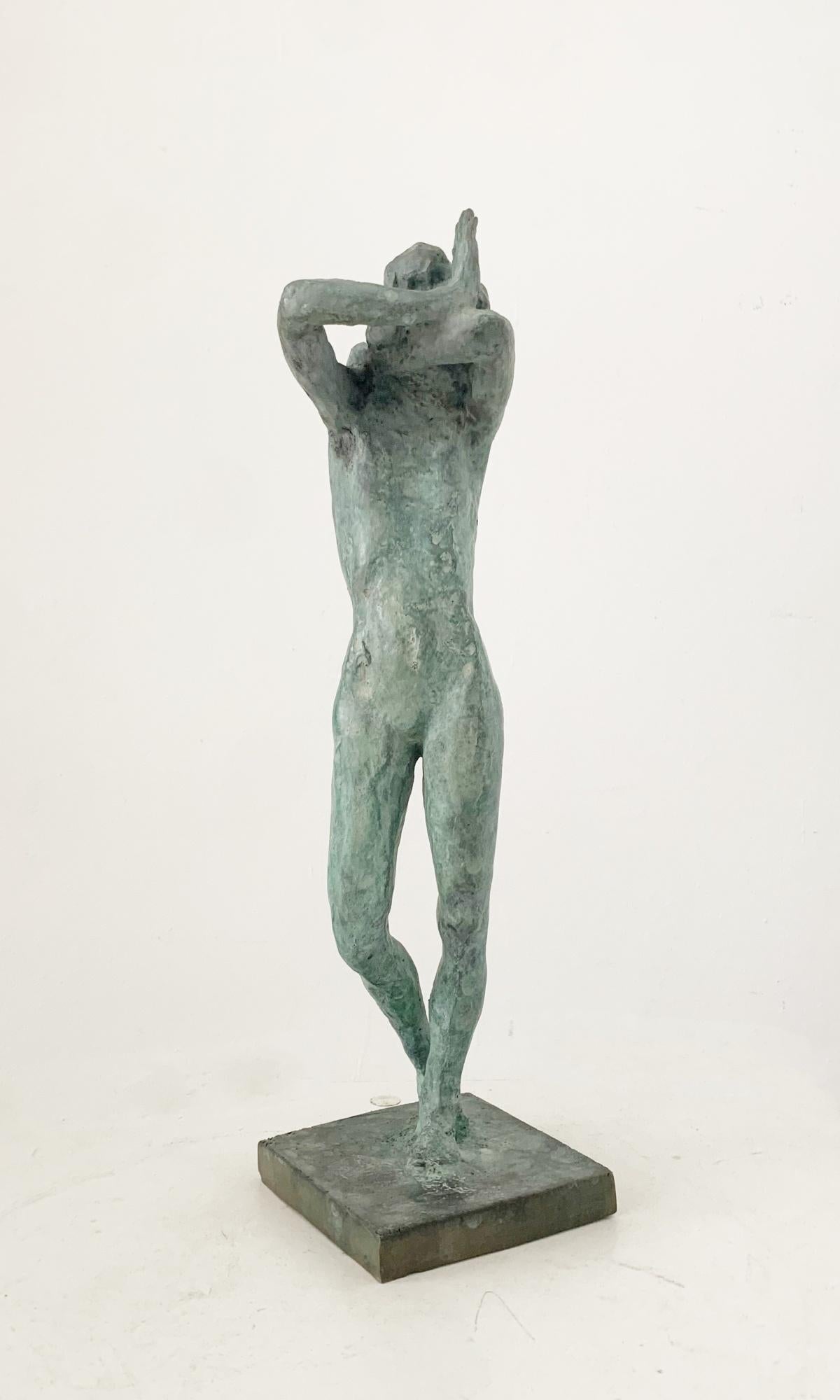John Singer SargentHow They Met Themselves By John Singer SargentEarly 20th century
Early 20th century
About the Item
- Creator:John Singer Sargent (1856-1925, American)
- Creation Year:Early 20th century
- Dimensions:Height: 11.75 in (29.85 cm)Width: 8.63 in (21.93 cm)Depth: 6.75 in (17.15 cm)
- Medium:
- Movement & Style:
- Period:
- Condition:
- Gallery Location:New Orleans, LA
- Reference Number:
John Singer Sargent
The most sought-after society portraitist of his time — as well as a highly accomplished painter of landscapes and genre scenes — John Singer Sargent was born in Florence, Italy, to well-to-do American parents. The French-trained Sargent depicted his sitters with a bravura brushstroke and a degree of originality that were highly progressive at the time. As a result, he enjoyed critical notice and important patronage, but also weathered some controversy.
Though Sargent spent most of his life abroad, his American ties brought him numerous portrait commissions as well as important commissions for the mural programs at Boston's Museum of Fine Arts and the Boston Public Library.
Sargent's works, whether in oil, watercolor, or charcoal, are marked with naturalness and a distinct sense of immediacy due to his remarkable technical facility as an artist. Whether monumental portraits or casual outdoor scenes, his works possess a freshness and fluidity seldom matched in any era.
Sargent spent much of his free time painting and sketching outdoors, and his landscapes, architectural, and subject pictures — influenced by his friendship with Claude Monet and frequently executed in watercolor — depict the various locations he visited, including Italy, rural England, Giverny, the Mediterranean, northern Africa, and the Alps. The artist devoted a large portion of his late career to his mural projects, and also served as a war artist during World War I.
Find original John Singer Sargent drawings, paintings and other art on 1stDibs.
- ShippingRetrieving quote...Ships From: New Orleans, LA
- Return PolicyThis item cannot be returned.
- Winston Churchill Artist Proof Bust by Ivor Roberts-JonesBy Ivor Roberts-JonesLocated in New Orleans, LAIvor Roberts-Jones 1916-1996 British Sir Winston Churchill Artist Proof Bronze with a green patina One of the greatest leaders of the modern world, Winston Churchill is among the...Category
20th Century Figurative Sculptures
MaterialsBronze
- Laocoön And His Sons By Adriaen De VriesLocated in New Orleans, LAAdriaen de Vries 1556-1626 Dutch Laocoön and His Sons Bronze A remarkable feat of artistry and skill, this bronze sculpture was created by famed Dutch artist Adriaen de Vries. Full of the swelling emotions and dramatic posing so quintessential to the period, the bronze is a masterclass in Baroque sculpture. The original Laocoön marble sculpture, after which this remarkable bronze was modeled, unquestionably influenced the lives and works of countless artists, authors, popes, kings and emperors since its re-discovery in 1506. Famously, Michelangelo declared the sculpture, created circa 35 BC, as the “greatest piece of art in the world.” Adriaen de Vries, an apprentice of the great sculptor Giambologna, undoubtedly sought to prove his skill and creative voice with his own depiction of this most famous scene. Known for his virtuosic casting technique, this rare and important sculpture embodies de Vries’ mastery. The story of Laocoön is one of the most famous in all of literature. As told by the poet Virgil, the Greeks, after an unsuccessful ten-year siege on the city of Troy, the Greeks craftily left a giant wooden horse outside the gates...Category
16th Century Baroque Figurative Sculptures
MaterialsBronze
- THE LAST DAYS OF NAPOLÉON BYLocated in New Orleans, LAThis highly evocative bronze by Vincenzo Vela captures the deposed Emperor Napoléon on his deathbed, holding a map of Europe and lost in thought about what might have been. Remarkable among most portrayals of the exiled leader, this highly detailed sculpture depicts Napoléon at his most vulnerable. Nonetheless, Vela perfectly captures his still-heroic bearing, which imparts to this work a monumental quality and quiet dignity. The mate to this figure is the colossal marble at the Musée du Château de Malmaison, which was shown at the Paris Salon of 1867. The founder of the verismo movement in Italy, Vela was one of the great exponents of realism in sculpture. Born in Ligornetto, Switzerland in 1820, he studied under celebrated sculptor, Benedetto Cacciatori. He was also influenced both by the work of Tuscan sculptor Lorenzo Bartolini, who seamlessly combined neoclassicism with naturalism and the romantic painting of Francesco Hayez...Category
19th Century Realist Figurative Sculptures
MaterialsMarble, Bronze
- CoupleBy Agustín CárdenasLocated in New Orleans, LAInfused with a crisp modernity and subtle sensuality, this bronze sculpture by Cuban-born artist Agustin Cárdenas is an exceptional example of late-2...Category
20th Century Modern Figurative Sculptures
MaterialsMarble, Bronze
- Arabesque on Right Side, Right Hand Close to Earth, Left Arm OutsideBy Edgar DegasLocated in New Orleans, LAOne of a series of sculpted dancers created by the incomparable Edgar Degas, this exceptional bronze exudes all of the expressivity one expects from this 20th-century great. Degas captures the essence of his model in the graceful work, as she strikes a particularly difficult pose of the arabesque. The dancer's features have been manipulated and simplified, executed in a manner that seems almost as if one of Degas' Impressionist canvases has come to life. Degas was obsessed with capturing the dancer in motion throughout his career. He rendered their grace and movement in oil, pastel, pencil, chalk and wax - in fact, of the seventy-four wax sculptures created by Degas during his lifetime, forty of them depicted dancers. Seven of these belong to his series that capture the various forms of the arabesque, and the present work is included among them. It details one of the most difficult and animated poses of the ballet. Degas’ dancer is precariously posed in a study of balance and motion, one leg gracefully thrust into the air as she tilts her body down towards the earth and extends her arm forward. The sense of her movement is perfectly captured in the extraordinary work, as well as the fluid lines of her body. The bronze is a sought-after rarity in terms of Degas’ sculptures. Not only are his dancers the most desirable of his work, but this bronze is also distinguished by the fact that it is a Valsuani bronze, meaning it faithfully records Degas’ wax version’s pose as it appeared at the time of its creation. Most Degas' bronzes that are found on the market were cast by Hébrard – these serialized bronzes are surmoulages, or “aftercasts,” that were cast from the modèle bronzes currently in the Norton Simon Museum (Pasadena). Because these bronzes are second generation, they are smaller and far less detailed that the current bronze. This example, however, was cast by Valsuani from a plaster that was taken directly from Degas’ waxes, according to scholarship by the art historian Dr. Gregory Hedberg. These plasters were created by Degas’ sculptor friend Albert Bartholomé shortly after Degas completed his wax figurines. Thus, they record the earliest versions of Degas’ wax sculptures, before they were damaged by time or handling, and before Degas himself altered the works. The Hébrard bronzes...Category
20th Century Impressionist Figurative Sculptures
MaterialsBronze
- Bronze of Pluto Abducting Proserpine after François GirardonLocated in New Orleans, LAAfter François Girardon 1628-1715 French Pluto Abducting Proserpine Bronze This High Baroque period composition captures the famed narrative of Pluto and Proserpine from Roman mythology. The late 17th-century patinated bronze, created after François Girardon's marble composition, captures the very moment that Pluto seizes Proserpine. The anguished goddess reaches skyward, attempting to escape the god’s grasp while Pluto’s stoic face betrays his knowledge that his ploy will succeed. This pivotal moment in the mythological tale has captured the imagination of many art historical greats, from Bernini to Rubens. François Girardon’s version of the climax demonstrates incredible finesse and artistry, modeled expertly in bronze in the present work by a later sculptor. The statue brings a twist of intertwined bodies into a dynamic frenzy, paralleling the tension of the legendary story. In ancient Roman mythology, Proserpine, the beautiful daughter of Ceres — known as Persephone in Greek mythology — was picking flowers in the fields when she was suddenly abducted by Pluto, the god of the underworld, and taken to his kingdom. Consumed with grief, her mother Ceres, the goddess of agriculture, scorches the earth, stopping the growth of grain and fruit. Jupiter attempts to intervene and secure Proserpine’s return to earth, negotiating a compromise with Pluto and the Fates that allows Proserpine to be released for part of the year before returning to Pluto’s underworld. Proserpine’s journey back and forth is an allegory for the changing seasons; when Prosperine is with her mother, the earth warms and provides bountiful harvests. Upon her annual return to the underworld, however, the earth once again becomes cold and barren. After returning to France after years of training in Rome, François Girardon quickly rose to become one of the greatest artists in France. He was elected a member of the Académie Royale de Peinture et de Sculpture in 1657 and would become Chancellor of the Royal Academy in 1695. The artist was approached frequently for royal commissions and Girardon’s Pluto was originally commissioned by Louis XIV for the gardens at his Palace of Versailles. It was one of four monumental marble groups intended to decorate the corners of Charles Le Brun’s never completed garden at the chateau, the Parterre d’Eau. Each group of three figures symbolized one of the four elements: earth, air, fire and water. Pluto’s association with hell made him the apt...Category
Early 18th Century Baroque Figurative Sculptures
MaterialsBronze
- Cylindre au Christ aÌ l'IdoleBy Paul GauguinLocated in Long Island City, NYA bronze sculpture after Paul Gauguin cast from a 1894 original wood carving. It is a wonderful example of his Primitivist style likely influenced by the Polynesian art...Category
Mid-20th Century Fauvist Figurative Sculptures
MaterialsBronze
- A woman. Contemporary figurative bronze sculpture, Polish art, Limited editionLocated in Warsaw, PLLimited edition bronze sculpture by Polish artist Olga Prokop-Misniakiewicz. Artist signes her artworks by hand, using engraving tool. Edition of 5. Olga Prokop-Misniakiewicz likes t...Category
2010s Post-Impressionist Figurative Sculptures
MaterialsBronze
- Expulsion from Paradise. Figurative bronze sculpture Polish art, Limited editionLocated in Warsaw, PLLimited edition bronze sculpture by Polish artist Olga Prokop-Misniakiewicz. Artist signes her artworks by hand, using engraving tool. Edition of 8. Olga Prokop-Misniakiewicz likes t...Category
2010s Post-Impressionist Figurative Sculptures
MaterialsBronze
- Heavy Bronze Sculpture Austrian Israeli judaica Jewish Couple Bench Nicky ImberBy Nicky ImberLocated in Surfside, FLLarge and heavy with magnificent patina. This is the large version of this piece. we cannot find any markings on it and it might be unique. Nicky Imber (Vienna, Austria, 1920 -1996) was a multidisciplinary Jewish artist best known for his sculptures on Jewish themes. Grand nephew of Naftali Herz Imber, author of the Israeli national anthem 'Hatikva'. After escaping the Nazi concentration camp in Dachau, he pledged to dedicate his art to perpetuating the memory of the Holocaust. Among his more famous works are "The Hope" and "The Love of Torah". His work can be seen around the world, in Northern Israel, the United States, and the Venezuelan Museum of Natural History in Caracas. Nicky Imber was born in Vienna, Austria. During his studies at the Academy of Arts in Vienna, he drew anti-Nazi caricatures for Jewish student publications. After several thwarted attempts by the family to leave Vienna, in 1938, in the wake of the 'Anschluss', Imber was deported to Dachau. Witnessing the murders of family and friends, he plotted his escape. Using skills he had learned in art school, he made a face mask out of bread and sand, stole a Nazi soldier's uniform and walked out the front gate unnoticed. In 1940, he boarded a ship...Category
Mid-20th Century Post-Impressionist Figurative Sculptures
MaterialsMarble, Bronze
- On a carpet hanger. Figurative bronze sculpture Polish art, Limited editionLocated in Warsaw, PLLimited edition bronze sculpture by Polish artist Olga Prokop-Misniakiewicz. Artist signes her artworks by hand, using engraving tool. Edition of 8. Olga Prokop-Misniakiewicz likes t...Category
2010s Post-Impressionist Figurative Sculptures
MaterialsBronze
- A woman. Contemporary figurative bronze sculpture, Polish art, Limited editionLocated in Warsaw, PLLimited edition bronze sculpture by Polish artist Olga Prokop-Misniakiewicz. Artist signes her artworks by hand, using engraving tool. Edition of 5. Olga Prokop-Misniakiewicz likes t...Category
2010s Post-Impressionist Figurative Sculptures
MaterialsBronze
Recently Viewed
View AllRead More
Wear Louis Comfort Tiffany’s Genius on Your Finger with This Vivid Ring
In his jewelry making, the designer rarely used diamonds — this rare example has two.
You Won’t Find a More Handsome Stopwatch Than This 1890s Pocket Chronograph
A Grand Complication from the golden era of pocket watches, the Marius Lecoultre pocket watch does everything but uncork your wine.





